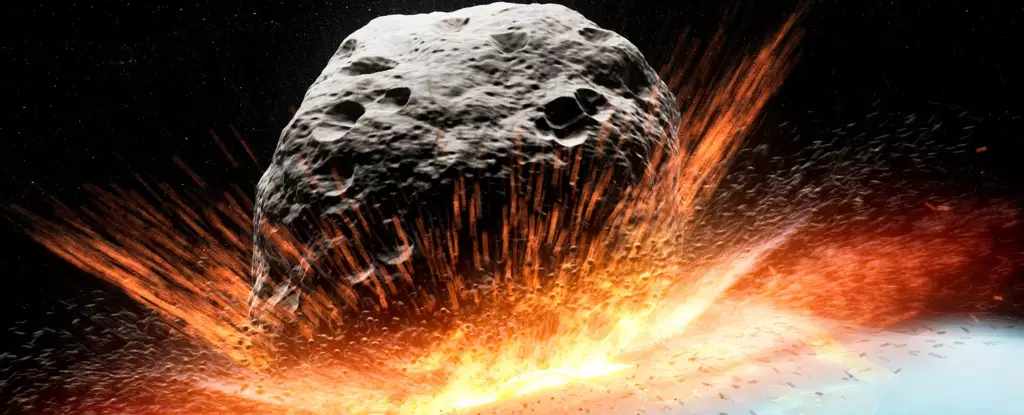In late December 2024, astronomers made an intriguing discovery: an asteroid was spotted in the vast expanses of the night sky, designated as 2024 YR4. This particular rock earned its name due to the timing of its discovery and its numerical order among the recent findings. With the discovery came a flurry of scientific activity, as astronomers set out to monitor this celestial body and assess its trajectory. Initially, studies indicated a minimal risk of it colliding with Earth—around a 1% chance. However, continued observations have led to revised predictions, now placing that risk at approximately 2.3%.
The seemingly low percentage of 2.3% may evoke a sense of relief, yet it represents a critical aspect of planetary defense. This figure is derived from thousands of orbital simulations conducted by researchers. Each simulation offers a hypothetical scenario based on the asteroid’s current trajectory and gravitational influences exerted by nearby celestial bodies. To put it simply, 23 out of every 1,000 simulated paths result in an impact with Earth. This statistical method provides a more nuanced understanding of the asteroid’s behavior compared to casual assumptions about collision probabilities.
Asteroid 2024 YR4 is projected to pass relatively close to Earth—240,000 kilometers away—within the lunar orbit. While this distance is not (yet) a cause for alarm, the precariousness of its trajectory demands continued observation.
The Torino scale is an essential tool in evaluating the potential danger posed by asteroids. When 2024 YR4 was initially detected—with its risk classified as less than 1%—it was given a designation of 3 on this scale. This classification indicates a need for vigilant monitoring rather than immediate concern. Even as the risk has increased to 2.3%, it remains at the same level on the Torino scale, emphasizing that while caution is warranted, panic is unwarranted for the time being.
Additionally, it is critical to understand that the nature of asteroid trajectories can be inherently unpredictable. Unlike planets, which follow consistent and well-calibrated orbits, asteroids are subject to myriad forces, including gravitational perturbations from other celestial objects. For instance, 2024 YR4 is anticipated to make a significant approach to Earth in 2028, offering a prime opportunity for astronomers to refine their predictive models.
Dealing with the Unknown: Challenges in Prediction
Uncertainty is a constant in the field of astronomy, and it is particularly apparent when dealing with asteroids like 2024 YR4. The risk assessments regarding this object reflect a broader truth: initial calculations can be imprecise. Future adjustments could potentially alter the collision odds significantly—either increasing or decreasing them—but the most likely outcome remains a decrease toward more stable values.
While it is essential to maintain vigilance, it is equally crucial to take a measured approach. Indeed, should it become necessary to address a high-impact event, the scientific community has developed plans to mitigate such risks. Technological advancements offer promising avenues for asteroid deflection, and even a near-total certainty of impact does not equate to a doomsday scenario.
The potential of an asteroid striking Earth garners understandably heightened interest and anxiety. Yet, it is crucial to approach these matters with a combination of optimism and prudent caution. The discovery of 2024 YR4 illustrates the ongoing challenges and evolving methodologies in planetary defense. Awareness is key; although the possibility of an impact exists, vast resources—including NASA’s Planetary Defense Coordination Office—are in place to monitor and possibly manage such threats.
Ultimately, the outcome associated with asteroid 2024 YR4 will depend on future observations and research. Information about its trajectory may shift, but early warnings, scientific vigilance, and technological advancement equip humanity with the capacity to confront what may lie ahead. Keeping an eye on developments surrounding 2024 YR4 will remain imperative as astronomers continue their mission to ensure the safety of our planet in an ever-changing cosmic landscape.


Leave a Reply